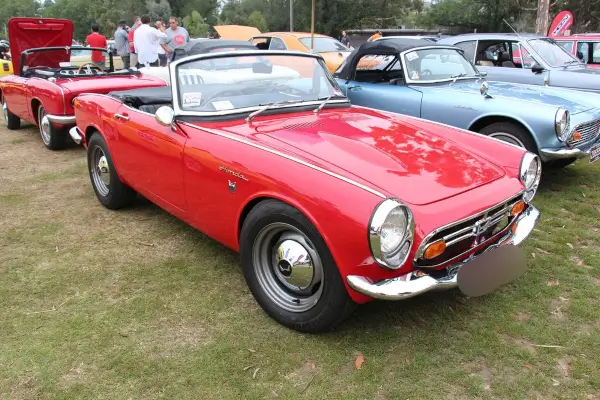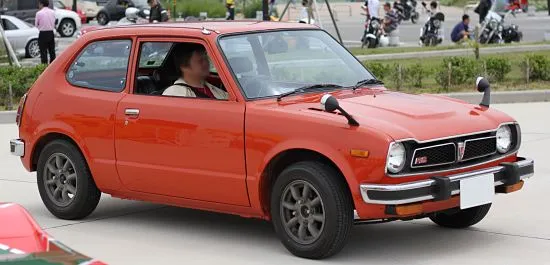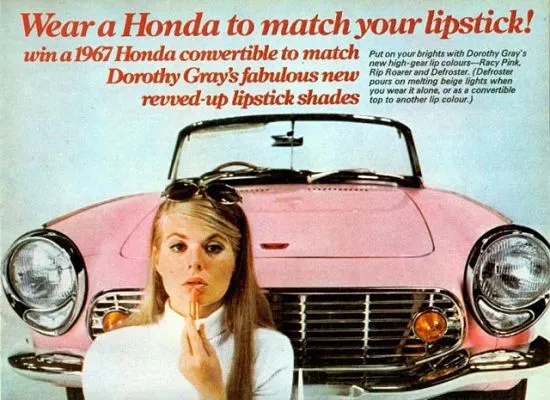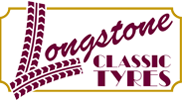Honda Tyres

Classic Honda Tyres
On the following pages, Longstone Classic Tyres give classic tyre fitment recommendations for Honda cars.
If your Honda is not listed, don't panic! Please give us a call on:
01302 711 123
or
Email: sales@longstonetyres.co.uk
Honda History
Soichiro Honda, Honda's founder, had a lifelong passion for cars. He was a mechanic at the Art Shokai garage, where he modified vehicles and raced them. Honda started Tkai Seiki in 1937, with funding from his friend Kato Shichir, to manufacture piston rings in the Art Shokai garage. Following early failures, Tkai Seiki was awarded a contract to provide piston rings to Toyota, however the contract was forfeited due to poor product quality. After failing to graduate from engineering school and visiting factories throughout Japan to better understand Toyota's quality control processes known as the "Five whys" Honda was able to mass-produce piston rings acceptable to Toyota by 1941, using an automated process that could employ unskilled labourers.

At the commencement of World War II, Tai Seiki was placed under the authority of the Ministry of Commerce and Industry (later renamed the Ministry of Munitions), and Soichiro Honda was demoted from president to senior managing director after Toyota acquired a 40% share in the firm. Honda also contributed to the war effort by supporting other businesses in automating the manufacture of military aircraft propellers.
Honda's contacts with individuals at Toyota, Nakajima Aircraft Company, and the Imperial Japanese Navy would be crucial in the postwar years. Tkai Seiki's Yamashita factory was destroyed by a US B-29 bomber raid in 1944, and the Itawa plant was devastated by the Mikawa earthquake on January 13, 1945. After the war, Soichiro Honda sold the salvageable portions of the firm to Toyota for ¥450,000 and used the funds to establish the Honda Technical Research Institute in October 1946.
They produced and marketed homemade motorised bicycles with a crew of 12 working in a 16 m2 shack, utilising a supply of 500 two-stroke 50 cc Tohatsu war surplus radio generator engines. When the engines were depleted, Honda began manufacturing their own replicas of the Tohatsu engines and selling them to clients to connect to their bicycles. This was the Honda A-Type, sometimes known as the Bata Bata because of the distinctive engine noise.

The Honda Technical Research Institute was dissolved in 1949 for 1,000,000, or approximately US$5,000 today; the proceeds were used to establish Honda Motor Co. Ltd. Around the same time, Honda engaged engineer Kihachiro Kawashima, as well as Takeo Fujisawa, who brought crucial commercial and marketing knowledge to supplement Soichiro Honda's technical bent. Soichiro Honda and Fujisawa worked closely together until they both retired in October 1973.
The 1949 D-Type, the first Honda to be dubbed Dream, was the first complete motorcycle, having both the frame and engine produced by Honda. Honda won its first Grand Prix and World Championships in the 125cc and 250cc classes in 1961. Honda Motor Company quickly developed to become the world's largest motorbike manufacturer by 1964.
Honda's first production vehicle was the T360 compact pick-up truck, which went on sale in August 1963. It was classed under the lower Kei vehicle tax band and was powered by a modest 356-cc straight-4 gasoline engine. The S500 sports vehicle was Honda's first manufacturing automobile, following the T360 into production in October 1963. Its chain-driven rear wheels harkened back to Honda's motorbike roots.
Over the next few decades, Honda strived to extend its product range, as well as its operations and exports to a variety of nations across the world. In an attempt to develop a foothold in the luxury automobile sector, Honda launched the successful Acura brand to the American market in 1986. The Honda NSX supercar, the first all-aluminium monocoque vehicle with a mid-engine V6 and variable-valve timing, was introduced in 1991.
Tadashi Kume was succeeded as CEO in 1990 by Nobuhiko Kawamoto. Shoichiro Irimajiri, who managed the successful foundation of Honda of America Manufacturing, Inc. in Marysville, Ohio, was chosen over Kawamoto. Within Honda, Irimajiri and Kawamoto had a friendly rivalry; nevertheless, due to health difficulties, Irimajiri resigned in 1992.
